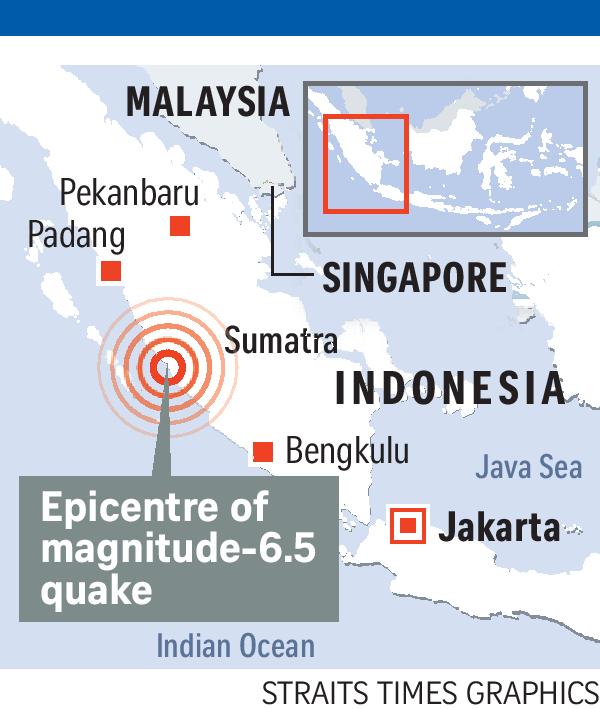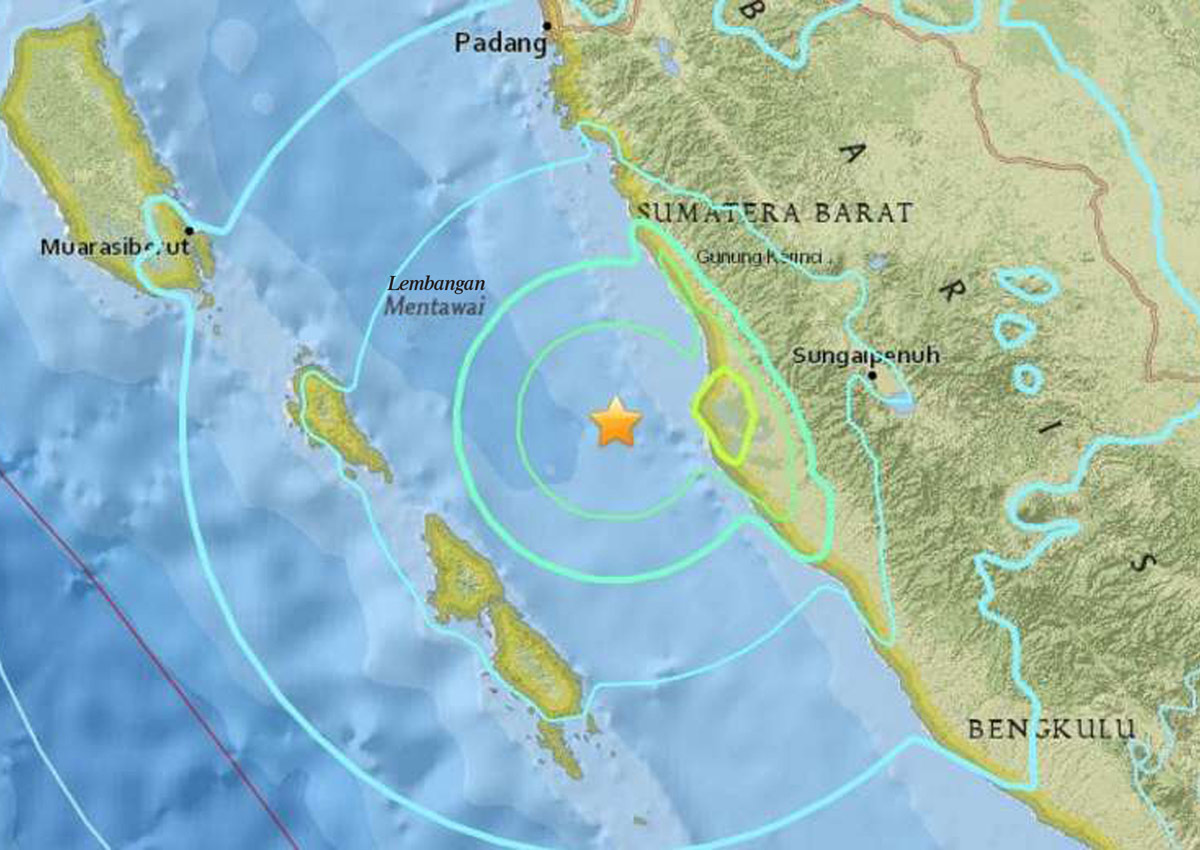A magnitude-6.5 earthquake struck the Indonesian island of Sumatra yesterday, with tremors also felt in neighbouring Singapore.
Some buildings in West Sumatra province, near the epicentre, were damaged but there was no tsunami, according to Indonesia’s National Disaster Management Agency .
The agency’s head of data and information, Dr Sutopo Nugroho, said the local authorities reported that 16 people were injured and about 55 buildings damaged.
Telecommunications and electricity supplies were largely unaffected, apart from a temporary power failure in Muko-Muko in Bengkulu province.
Tremors lasting up to a minute in Singapore caused some residents to panic, while at least one hospital in Sumatra evacuated patients, including those in beds, as a precaution.
Indonesia’s Meteorological, Climatological and Geophysical Agency said the quake struck at about 5.56am local time (6.56am Singapore time).
The epicentre was about 79km off the coast of West Sumatra at a depth of 72km. Adjacent provinces such as Bengkulu experienced strong to moderate shocks, said Dr Sutopo.

“Very hard tremors were felt by people in the south coastal district and Muko-Muko for about 20 to 30 seconds,” he said. “Beds and home appliances shifted out of position, people panicked and rushed out of the house.”
Strong tremors were also felt in Padang, the capital of West Sumatra province, as well as Jambi and Pekanbaru, the closest city in Sumatra to Singapore.
“The earthquake was triggered by subduction activity of the Indian, Australian and Eurasian tectonic plates in the top of the Benioff zone,” Dr Sutopo said, referring to an inclined zone in which deep earthquakes typically occur.
Indonesia sits on the Pacific Ring of Fire, a belt of seismic activity running around the Pacific Ocean.
Experts have long said that a geological time bomb is ticking in Indonesia, and Padang, a city of about one million people, lies near it.
Findings published two years ago have indicated that coastal communities such as Padang, traditionally believed to be shielded from waves by offshore islands, may face a higher risk of tsunamis.
Sumatra has been struck by at least two strong earthquakes in recent months. They include a magnitude-5.9 quake on April 10 about 61km south-west of Bengkulu, and a powerful magnitude-7.8 earthquake about 800km off the coast of Padang on March 2.
A tsunami, caused by a magnitude-7.5 quake, destroyed hundreds of homes in the Mentawai Islands, just off West Sumatra, in 2010. More than 461 people died in that disaster, which came not long after a catastrophic magnitude-7.6 earthquake in Padang in 2009 killed more than 1,100 people.
Five major quakes, including the catastrophic 2004 Boxing Day tsunami, have struck the city over the past 12 years, giving it the dubious distinction of being the earthquake capital of the world.

This article was first published on June 3, 2016.
Get a copy of The Straits Times or go to straitstimes.com for more stories.





